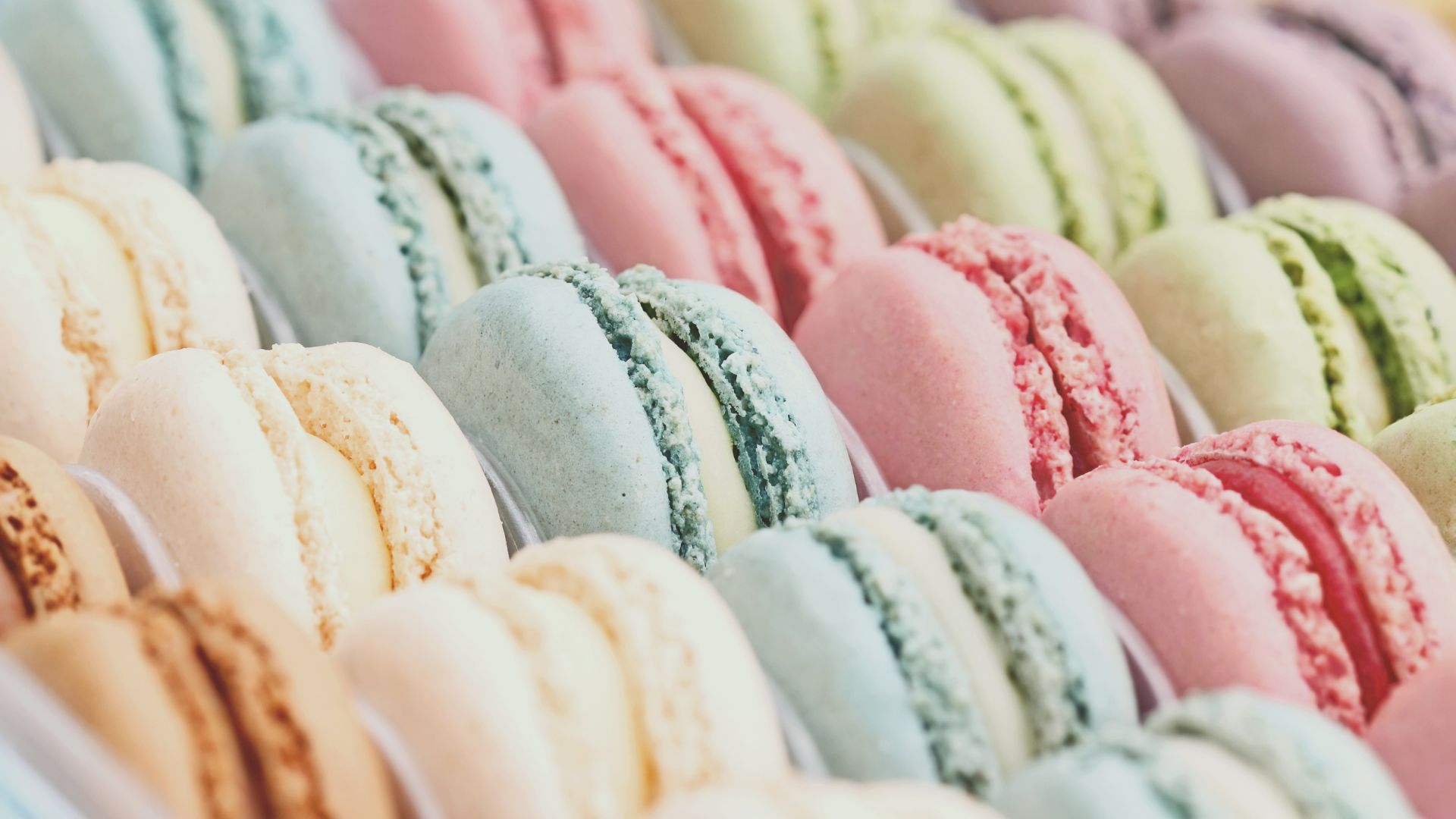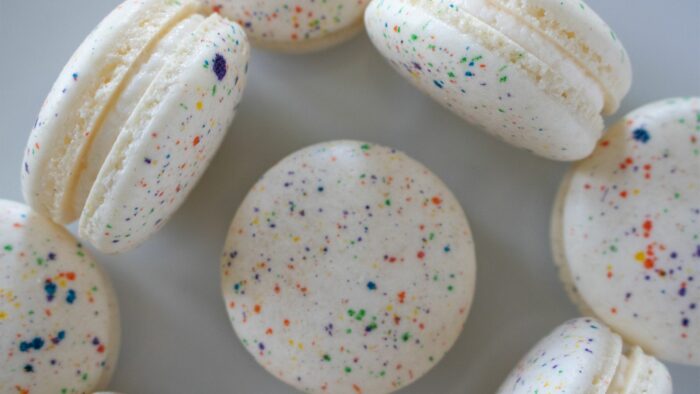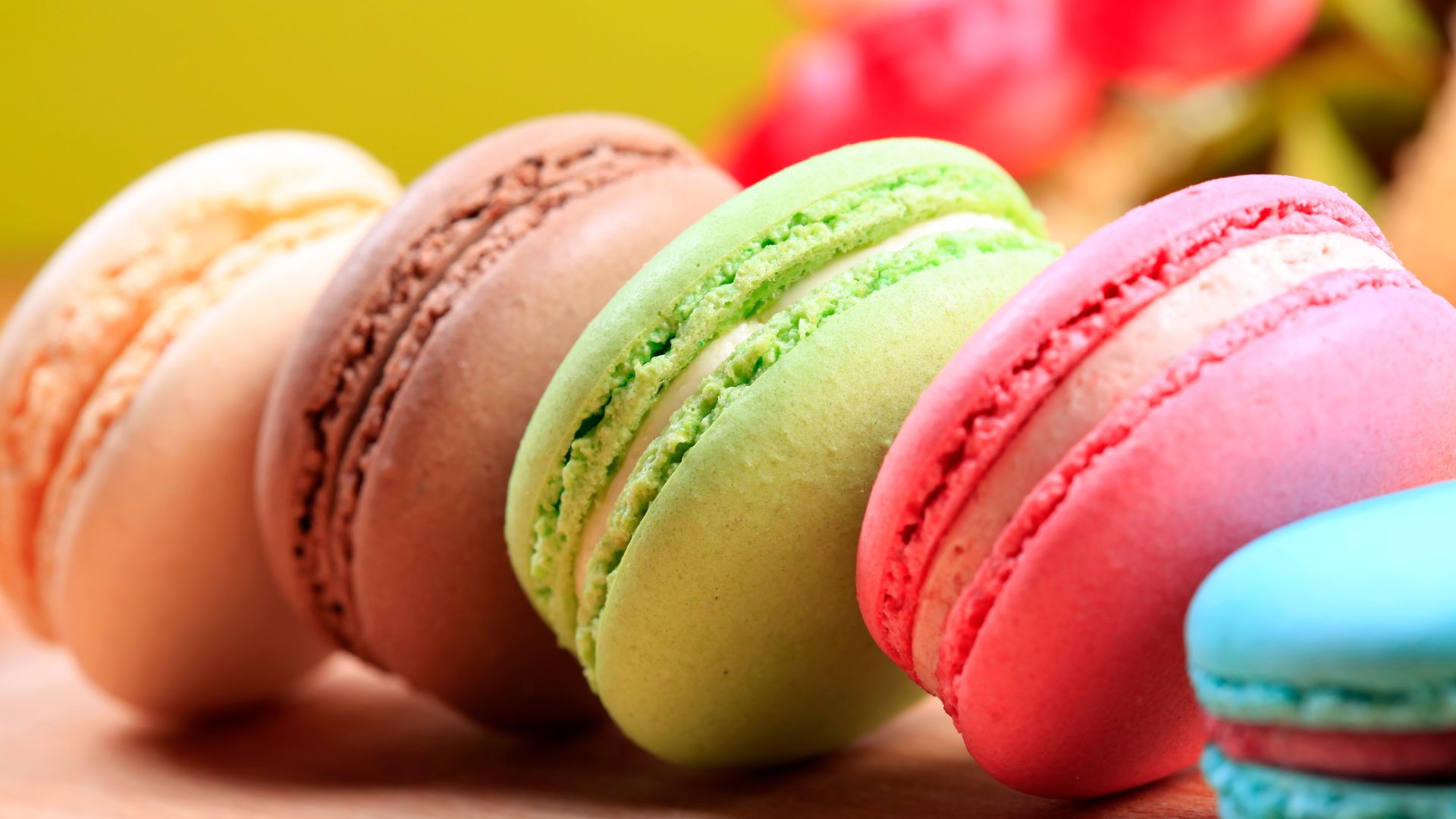Last Updated on February 18, 2023
In this in-depth guide, we will take a look at the best food coloring for macarons. We’ll discuss the different choices and why they work so well.
Then, we’ll also include an easy guide on how to make colored macaroons and how to choose the best coloring from the many products available on the market.
What Is The Best Food Coloring For Macarons?
Before looking at the best food coloring for macarons, let’s first talk about what exactly they are and what makes them so tricky to make.
First off, today we are specifically talking about French macarons. We aren’t talking about coconut macaroons. That’s because the more difficult to make between the two are French macarons.
French macarons require a specific type of food coloring. You can use any type of food coloring for coconut macaroons.
Now, what exactly are french macarons? These are tiny cookie sandwiches with a rich creamy soft filling. They are primarily made from almond flour and a meringue (usually Italian meringue).
There are many things that can make macarons come out less than perfect. One of these things is getting the perfect ratio of wet to dry ingredients.
For this reason, professional pastry chefs only recommend using gel food coloring. In our personal experience, powdered food coloring also works fine to make pastel colors. Just stay away from liquid food coloring!
If you use liquid food coloring, you will change the ratio of wet and dry ingredients in a macaron mixture. This in turn will change the physical appearance of the cookies as well as their texture.

Why gel is the best food coloring for macarons
Gel food coloring is by far the best option you can choose. It is a heavily concentrated color that won’t make the macaron batter too dry or too wet.
And what makes it an even better choice is that you don’t have to add a lot to get a very saturated color. More often than not, you have to add so much liquid and powdered food coloring to get a nice color. This of course changes the ratio of the ingredients.
With gel food coloring, you only need a drop or two depending on the shape you want.
You can also find a lot more colors available in gel form. This makes it easy to buy what you want. You don’t have to mix custom colors like you would with powdered and liquid colorants.
How To Color Macarons Using Gel Food Coloring
People like to add the gel coloring into the batter at different stages. Personally, we add ours with the essences or extracts. This is the best way to avoid over-mixing the batter (another major mistake people make when attempting macarons).
You can also add it to the meringue you make. The color will fade slightly when you mix it with the dry ingredients. But, you can still add a bit more afterward if you see the color isn’t what you wanted.
Don’t use too much gel coloring. More often than not, you only need to add a single drop of gel coloring. It will create a very saturated color.
How to make pastel-colored macarons
Making pastel-colored macarons is easier than bright ones. To make a pastel color, use pastel gel coloring or simply add a tiny bit of the color you have. By adding less, the color will fade as it’s mixed in with the ingredients.
Another thing to keep in mind is that macarons fade as they bake. So, don’t under-color your batter.
As you experiment with colors and batches, you’ll figure out exactly how much you need to add for the exact color you want.
This is also where powdered food coloring works great. It has a less saturated color than gel food coloring. By adding a little bit, you won’t affect the consistency of the batter and get a very muted color that comes out pastel once baked.
How to make splattered macarons using gel food coloring
This is another reason we prefer only keeping gel food coloring on hand. You can dilute it with a little bit of water to splatter it onto your baked plain macarons.
To start, mix 1 part gel food coloring with 2 parts water. So 1 drop of gel coloring with 2 drops of water. Test the color on the paper before splattering or painting with it.
To create a splatter effect, you can dip a paintbrush in the diluted mixture. Then, hit it against another brush over the macarons to create a splatter.
You can also paint fine details with it using a mixture of alcohol and gel food coloring. It’s extremely diverse in how you can use it.

Choosing The Best Gel Food Coloring For Macarons
There are so many different brands you can choose from. It’s almost impossible to list!
Wiltons are a well-known reputable brand. You can also go for Ann Clark gels, AmeriColor, LorAnn, and Chefmaster options.
A high-quality gel food coloring doesn’t have to be expensive. We don’t like buying sets because you don’t always end up using every color they include. But they are great for beginners or if you mix your own colors.
Gel colors should have a very thick consistency. They shouldn’t be very runny or watery (even if they get a little hot at room temperature).
And of course, they should be heavily saturated. We always test a new brand of gel coloring on paper before adding it to our food. This is a great indication of what the color actually looks like “spread out.”
Always go for brands that people know. And always make sure it is food safe! This may seem stupid to say, but when you go to Chinatown, you’d be shocked to see how many gel “food” colorings contain inedible ingredients.
In Conclusion – The Best Food Coloring For Macarons
We hope that you’ve enjoyed this guide on the best food coloring for macarons. If you still have any questions, let us know in the comments below! And, we’re always open to any topics you’d like us to cover!

Lindy Van Schalkwyk is a culinary specialist with a background in Advanced Cooking, Advanced Pâtisserie, Media Communications and Nutrition. She has gained invaluable experience in the culinary industry having worked in some of the top restaurants in Africa in 2016 and 2017. Her expertise in nutrition has enabled her to develop recipes for special dietary needs. In 2018, Lindy began working in the Food Media industry, focusing on recipe development, recipe writing, food writing and food styling.


